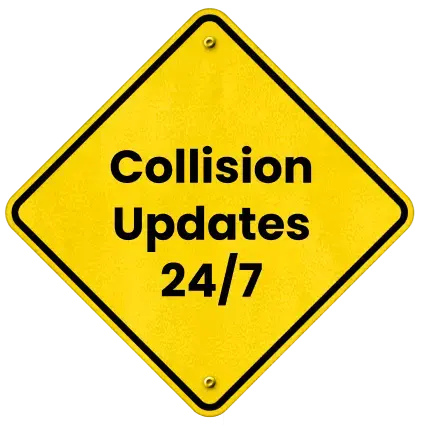
Cross-Border Truck Traffic Near Laredo: Risks on I-35


The I-35 corridor through Laredo, Texas, is one of the most important trade routes in the United States, connecting the U.S. to Mexico. This corridor, often referred to as the I-35 truck corridor, sees an immense volume of commercial freight traffic daily. Trucks carrying goods, materials, and cargo flow through Laredo to support commerce across both borders. While this trade is critical to the economy, it also creates unique safety challenges for everyone sharing the highway. Drivers on this stretch must contend with large vehicles, frequent lane changes, congestion, and variable weather conditions, all factors that contribute to a higher risk of commercial vehicle accidents and Laredo freight crashes.
The concentration of trucks on I-35 near Laredo can be overwhelming, especially for passenger vehicles unfamiliar with the dynamics of heavy freight traffic. Large trucks have longer stopping distances and blind spots that smaller vehicles must account for. Even slight miscalculations in speed, lane choice, or merging can escalate into serious accidents. Understanding these risks, as well as how to respond if involved in a crash, is essential for drivers traveling through this corridor.
Heavy Freight Volumes and Traffic Dynamics
Laredo’s position as a major port of entry means that I-35 sees thousands of commercial vehicles daily. Trucks frequently move at different speeds, depending on load weight, road grades, or traffic conditions. This variability creates speed differentials that increase the likelihood of collisions, particularly when passenger vehicles attempt to weave between slower-moving trucks.
Peak travel times, including early mornings and late afternoons, tend to be the most congested. Congestion is further compounded by inspection checkpoints, toll plazas, and port-related traffic. Drivers may experience sudden slowdowns or stop-and-go conditions, which heighten the risk of rear-end collisions or multi-vehicle crashes. Additionally, road construction projects or maintenance work can reduce lane availability, forcing trucks and passenger vehicles into narrower lanes and increasing hazards.
Common Truck Crash Scenarios
Accidents involving commercial trucks often follow predictable patterns due to the nature of these large vehicles. Some of the most frequent crash scenarios along I-35 near Laredo include:
- Rear-End Collisions: Trucks require significantly longer distances to stop. Passenger vehicles that cut in front without accounting for this distance risk collisions. Sudden braking or unexpected slowdowns are particularly dangerous in heavy traffic.
- Side-Impact Crashes: Trucks have large blind spots on their sides, especially along the passenger side. Drivers attempting to change lanes without ensuring they are visible can trigger side-swipe accidents.
- Rollovers: Trucks carrying heavy or top-heavy loads can tip over when navigating curves, sudden evasive maneuvers, or abrupt braking.
- Cargo Spills: Improperly secured freight can shift or spill, creating hazards for other drivers. Spilled cargo can also damage road surfaces or block lanes, creating chain-reaction accidents.
- Merge Conflicts: Short on-ramps, heavy congestion, and aggressive merging by impatient drivers frequently result in collisions between trucks and smaller vehicles.
Understanding these common scenarios can help drivers anticipate potential dangers and adjust their driving behavior accordingly. Maintaining a safe following distance, using mirrors effectively, and remaining patient during congested periods can reduce crash risk.
Hours-of-Service Violations and Driver Fatigue
Fatigue is a major contributor to truck crashes on I-35. Federal regulations, known as hours-of-service rules, limit how long commercial drivers can operate without rest. Despite these regulations, violations occur due to tight delivery schedules, traffic delays, or economic pressures. Driving while fatigued reduces reaction times, impairs judgment, and increases the likelihood of errors that can lead to crashes.
Passenger vehicle drivers must recognize the signs of truck driver fatigue. Observing erratic lane changes, inconsistent speeds, or slow reactions from trucks can help alert other drivers to maintain additional space. Additionally, understanding these risks emphasizes the importance of defensive driving near large commercial vehicles.
Preserving Evidence After a Truck Accident
In the aftermath of a commercial vehicle accident on I-35 near Laredo, preserving evidence is essential to protect your rights and support potential insurance or legal claims. Documentation helps investigators and legal professionals determine the causes of a collision and identify responsible parties.
Key forms of evidence include dashcam footage, which provides a real-time account of events and helps clarify exactly what happened; truck maintenance records, which may reveal whether mechanical issues or neglected maintenance contributed to the crash; and driver logs, such as hours-of-service records or electronic logging devices, which provide insight into fatigue or regulatory violations that could be critical in establishing liability.
Witness statements also play an important role, as third-party accounts from other drivers or bystanders offer additional perspectives on how the incident unfolded. Finally, photographs and scene documentation, including images of vehicle positions, skid marks, damage, and road conditions, help create a visual record of the crash.
Prompt action is important because evidence can deteriorate, be removed, or altered if not collected quickly. Recording as much information as possible—including vehicle damage, weather conditions, and road signage—ensures a comprehensive record. Proper preservation of evidence not only supports claims but also helps ensure that investigations are accurate and fair.
Safety Tips for Drivers on the Laredo I-35 Truck Corridor
Navigating this heavily trafficked section of I-35 safely requires preparation and vigilance. Drivers should consider the following strategies:
- Plan Routes in Advance: Identify traffic patterns, weigh stations, and construction zones before traveling. Use real-time traffic monitoring tools to avoid peak congestion.
- Maintain Safe Following Distances: Give trucks more space than you might with smaller vehicles. Longer stopping distances reduce the likelihood of rear-end collisions.
- Stay Visible: Avoid lingering in truck blind spots, especially on the sides and directly behind the cab.
- Be Patient: Aggressive driving or rushing through traffic increases the risk of accidents.
- Adapt to Weather: Fog, rain, and high winds can affect visibility and vehicle control. Reduce speed and increase spacing during adverse conditions.
- Avoid Distractions: Stay focused on the road and anticipate the movements of surrounding vehicles. Even brief distractions can lead to serious collisions on congested highways.
Seek Support After a Truck Accident
Accidents involving large commercial vehicles can be stressful and overwhelming, leaving drivers unsure of what steps to take next. Having experienced guidance can make a significant difference in managing the aftermath. Our team of knowledgeable I-35 accident lawyers is available to provide personalized support, helping you understand your rights and navigate complex insurance or legal processes.
Scheduling a free consultation allows our team to assess your situation carefully. We can guide you through documentation requirements, evidence preservation, and communications with insurance providers or trucking companies. Beyond legal guidance, we prioritize helping you regain a sense of control and confidence after an unexpected crash. Our goal is to provide reassurance and clear direction, ensuring your safety, well-being, and peace of mind as you focus on recovery and moving forward.
